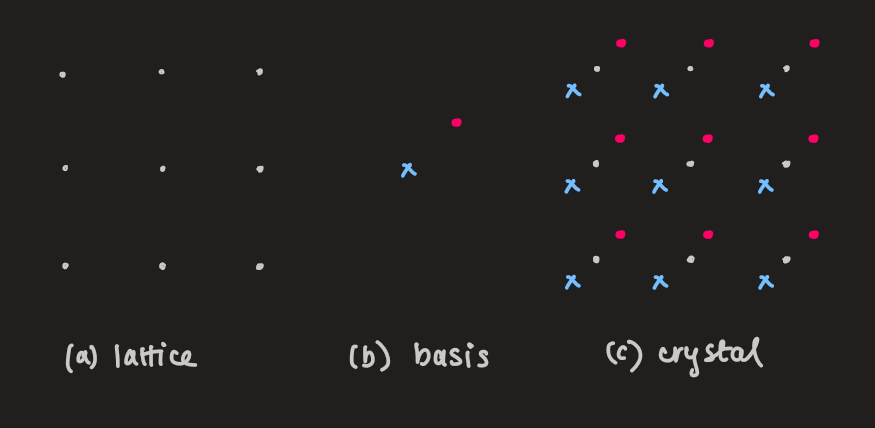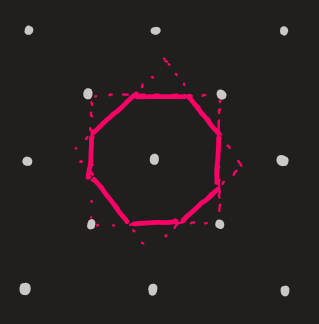PX262 - K1 - electrons in crystalline solids
- in many solid materials, the nuclei are arranged into ordered structures, ie. crystal lattices
- they possess translational symmetry
- this affects the electronic states
- a perfect crystal can be generated by decorating each point in the lattice with the same basis (atoms as groups of atoms)
- a lattice is an infinite array of mathematical points in space with translational symmetry

-
in 3D, the lattice consists of all points with position vectors,
, in the form: , where, , , are three non-coplanar vectors -
the so-called 'primitive vectors' of the lattice and
, and over all positive and negative integers -
the unit cell of a lattice in 3D is a parallelepiped with volume:
-
packing the unit cells together fills all space
-
there are just fourteen 3D crystal structures with different symmetries - the bravais lattices
-
they are in seven groups: cubic, tetragonal, orthorhombic, hexagonal, trigonal, monoclinic, and triclinic
wigner-seitz cell
- this is a cell which is constructed around a lattice point, enclosed by the planes that bisect, and are perpendicular to the vectors connecting the point to each of the nearest neighbours
